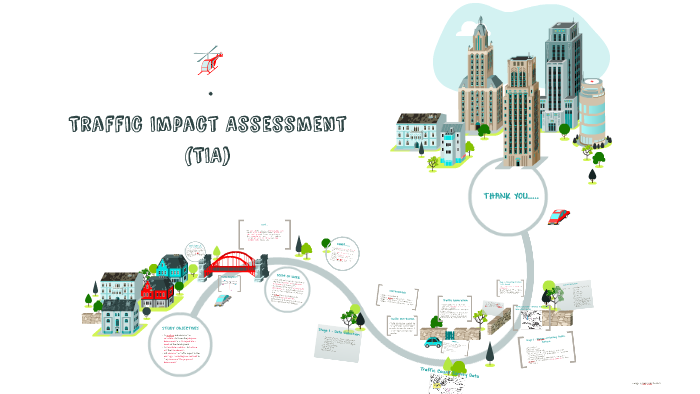When new buildings, shopping centers, or roads are planned, traffic often becomes a big concern. A Traffic Impact Assessment (TIA) is a special kind of study that checks how traffic might change and what to do about it. It helps planners make smart choices before construction even starts.
What Is Traffic Impact Assessment?
A Traffic Impact Assessment (TIA) is a professional study that looks at how a proposed development will affect the existing road and traffic conditions around it. Whether someone is building a new apartment complex, shopping center, or even a large office building, a TIA helps figure out if the new development will make traffic worse, and if so, what can be done to fix or prevent problems.
The goal of a TIA is simple: to protect public safety and improve traffic flow. It looks at things like current traffic volumes, how busy the roads already are, what the future conditions might be, and how the new development could change traffic patterns. It is often required by city planners and transportation departments before a project can move forward. This ensures that the new development will not overwhelm the existing roads and will keep everyone safe, including drivers, bikers, and pedestrians.
TIAs are part of responsible urban planning. They provide cities and towns with information to decide whether road changes, traffic signals, new lanes, or crosswalks are needed before construction begins. This kind of traffic analysis is not just about cars—it’s also about how buses, bicycles, and people on foot will be affected by the changes in traffic.
Why Traffic Assessments Are Important
Imagine a new shopping mall being built near your neighborhood. Without a TIA, the extra cars could cause traffic jams, longer wait times at stoplights, and even dangerous conditions for pedestrians. That’s why traffic impact assessments are so important.
A Traffic Impact Study ensures that a development won’t cause major issues for existing traffic. It helps cities prevent dangerous intersections, reduce congestion, and manage the flow of vehicles more smoothly. It also provides data-driven solutions to traffic problems that may arise from the project.
City planners rely on transportation impact studies to make smart, informed decisions. These studies also help developers, who can prepare better site designs that meet traffic regulations. This way, both public safety and development goals can be achieved at the same time.
Who Needs a Traffic Impact Assessment?
Not every project needs a TIA, but many large or high-impact projects do. Usually, if a development is expected to bring in a lot of people or cars, a TIA is required.

This includes projects like:
- Large housing developments
- Shopping centers or supermarkets
- Schools and universities
- Hospitals or medical centers
- Office parks and industrial sites
In many U.S. states, a traffic study for development is required by law before permits can be issued. Even if it’s not legally required, many responsible developers choose to do it to avoid traffic problems down the road.
When Is a TIA Required?
There are several times when a TIA traffic study is needed. It’s not just a box to check—it’s a crucial part of responsible planning.
Before Construction Starts
The best time to do a traffic impact analysis is before any construction begins. This way, the findings of the study can be used to make necessary changes to the building’s design or the nearby roads. For example, if the study finds that the project will lead to traffic delays, the planners can add an extra turn lane or move the driveway to a better location.
If Traffic Will Greatly Increase
If a project will lead to a big increase in traffic—like thousands of cars a day—it will almost always need a TIA. This applies especially to busy urban areas where even small changes in traffic can cause major problems.
Some towns or counties have rules, like requiring a TIA for any project expected to generate more than 100 or 200 new trips per day. The exact number varies, but the idea is to make sure the roads can handle the new traffic safely and efficiently.
For Safety Reasons
A key reason for doing a TIA is to make roads safer for everyone. Road safety studies are not only about preventing traffic jams—they’re about saving lives.
When roads are overloaded or poorly designed, accidents are more likely to happen. Cars might back up into intersections, or drivers might make unsafe turns. A TIA can catch these problems early and recommend solutions like:
- Installing traffic lights or stop signs
- Widening roads or adding turning lanes
- Creating safer crosswalks for pedestrians
- Making better signs and road markings
By identifying these risks ahead of time, city planners and developers can work together to prevent accidents before they happen. That’s why safety is one of the main benefits of a well-done TIA.
What Does a Traffic Impact Study Include?
A traffic impact study is not just one simple step. It includes a lot of different parts, each one designed to understand and improve traffic around a new development.
Here’s what’s typically included:
- Existing Conditions: This includes traffic volume counts, road widths, number of lanes, traffic signals, and accident history.
- Trip Generation Estimates: How many new car trips will the project create per day and during peak hours.
- Traffic Flow Analysis: This looks at how traffic moves in the area, especially during rush hours.
- Intersection Analysis: Are the nearby intersections able to handle the extra traffic?
- Future Growth Projections: Traffic is always increasing. A good TIA looks at how future growth will affect roads in 5 or 10 years.
- Mitigation Measures: What can be done to fix or reduce the impact? More lanes? Signals? Crosswalks?
This is a data-heavy process that involves maps, models, and sometimes even software tools to simulate future traffic conditions. But the result is a clear plan that shows what changes are needed.
How Experts Do the Study
Transportation engineers or certified traffic consultants usually carry out these studies. They follow strict guidelines to collect and analyze traffic data. It’s not just guesswork—it’s science and math applied to city planning.

First, they visit the site and count vehicles at different times of the day. They might use cameras or manual counters. Next, they use trip generation rates, which are average numbers based on similar types of developments, to estimate how many cars the project will add.
Then, using traffic simulation software, they analyze how the area will function after the project is built. If problems are found, they suggest changes—either to the road network or to the building plan.
What Happens After the Study?
Once the traffic impact study is done, it’s submitted to local government planners. They review it and decide whether to approve the project or require changes. Sometimes the developer must agree to fix roads or pay for upgrades before construction can begin.
Fixing Road Designs
If the TIA shows that the project will make traffic worse, the developer might have to redesign parts of the road. This could mean adding lanes, changing intersections, or modifying parking entrances.
In some cases, the city might ask for a roundabout instead of a signal, or a dedicated bike lane to improve safety and reduce car traffic.
Adding Crosswalks or Signs
For pedestrian-heavy areas like near schools or shopping centers, the TIA may recommend crosswalks, warning signs, or even flashing pedestrian beacons. These changes help make the roads safer and easier to use for everyone—not just cars.
Sometimes a new stoplight or sign can make a big difference. Even small changes like better signs or paint lines can come from a good traffic study.
Benefits of Traffic Impact Assessment
There are many benefits of doing a TIA:
- Improves safety for drivers, pedestrians, and bikers
- Reduces traffic jams and delays during peak times
- Helps city planners make informed, data-based decisions
- Saves money by preventing future road problems
- Makes communities better by supporting smart growth
- Builds trust between developers and local residents
Whether you’re a city planner, developer, or just a concerned citizen, a traffic impact assessment gives you the tools to make smarter, safer decisions for your community.
The Bottom Line
So, what is a traffic impact assessment? It’s a smart and responsible way to plan for the future. Before buildings go up, roads need to be ready. A TIA checks that traffic will still move smoothly and safely after new construction.
Without a proper traffic analysis before construction, neighborhoods can suffer from traffic jams, unsafe roads, and unhappy residents. But with a TIA, everyone wins—developers get to build, cities stay safe, and traffic flows smoothly.
The next time you see a big new project starting, remember that behind the scenes, experts have (hopefully) done a thorough traffic impact study to protect you and your community. That’s what smart planning looks like.


